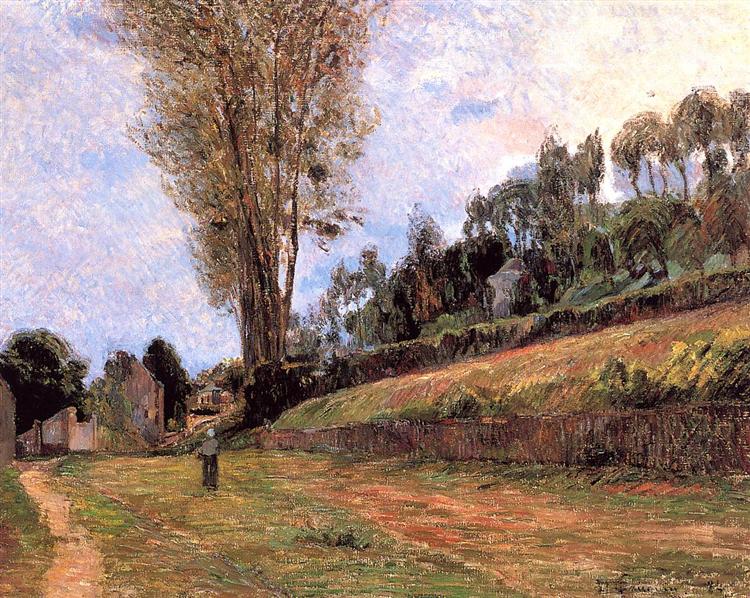Description
Paul Gauguin, one of the most innovative and enigmatic artists of post -impressionism, offers in his work "Calle de Raán" (1884) a fascinating interpretation of everyday life with an approach that moves away from photographic realism. In this piece, Gauguin shows his ability to capture the essence of a scene, stripped of unnecessary complexities and at the same time rich in his visual narrative. The work, which represents a street in Rouán, is a window to the atmosphere of the French urban life of the late nineteenth century, but it is also an exploration of color, shape and emotion.
The composition of "Calle de Ruán" is intriguing in its simplicity. A quiet street extends to the bottom, marked by the presence of buildings that, although structurally well defined, offer an almost two -dimensional quality. This is characteristic of Gauguin's style, who emphasized shapes and colors about strictly realistic representation. Instead of a traditional in -depth perspective, the work suggests a more symbolic space than physical, inviting the viewer to participate in a visual dialogue with the work.
Vibrant colors dominate the scene; Gauguin uses a palette that oscillates between ocher, terrible and green tones, creating a warm and cozy atmosphere. This color choice is not only decorative, but also encourages an emotional experience. The blue sky, almost perfect, brings a sense of tranquility, while the yellow and the green of the buildings and vegetation suggest a life that throbbs beyond the stillness of the street. Light plays a fundamental role in the work, providing shadow and depth to the elements present without needing to be tediously detailed.
In terms of characters, painting shows some figures in the distance, almost as shadows of everyday life in the city. This is a reflection of Gauguin's interest in the human aspect in urban life, although he does not seek to focus attention on them. Often, in their work, human figures are stylized, and here a minimization is carried out that highlights the scenario instead of the subject. This artistic choice can be interpreted as a way to find poetry in the common, suggesting that life occurs subtle in the background, while the work itself focuses on the beauty of the environment.
"Calle de Raán" is an example of Gauguin's innovative approach to painting; His tendency to experiment with color, shape and composition had a deep impact on the development of modern art. Like other works of the time, such as those of Vincent Van Gogh or Henri Toulouse-Lautrec, the work travels along the path of an emerging modernity, where color and emotion prevail over the traditional technique. Gauguin, in his search to explore spirituality and emotion in painting, also anticipates roads that will be taken by later movements, such as Fauvism, which would enthusiastically embrace the use of pure color as a means of expression.
In conclusion, "Calle de Ruán" is not simply a representation of a place; It is a manifestation of Gauguin's unique vision, a painter who managed to go beyond the limits of his time. The work reminds the spectator that in the simplicity of everyday life a deep beauty, a sense of community and emotional resonance that transcends the mere visual capture can be found. Gauguin, with his unique artistic voice, invites each one to rediscover the everyday through his colorful and vibrant look.
KUADROS ©, a famous paint on your wall.
Hand-made oil painting reproductions, with the quality of professional artists and the distinctive seal of KUADROS ©.
Reproduction service paintings With a guarantee of satisfaction. If you are not completely satisfied with the replica of your painting, we refund your money 100%.

